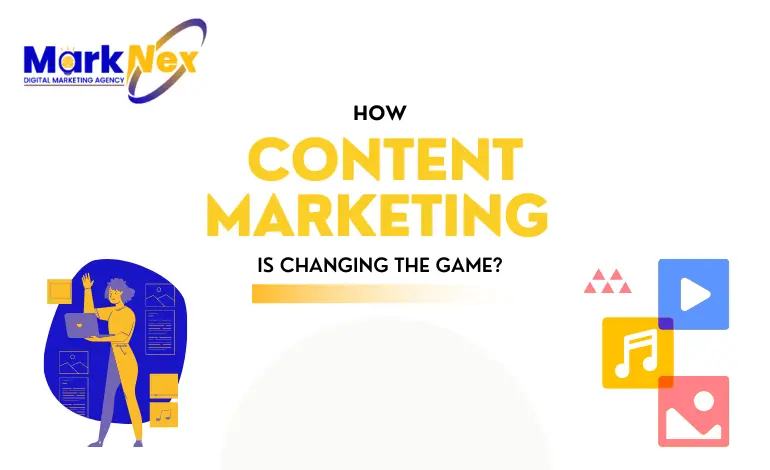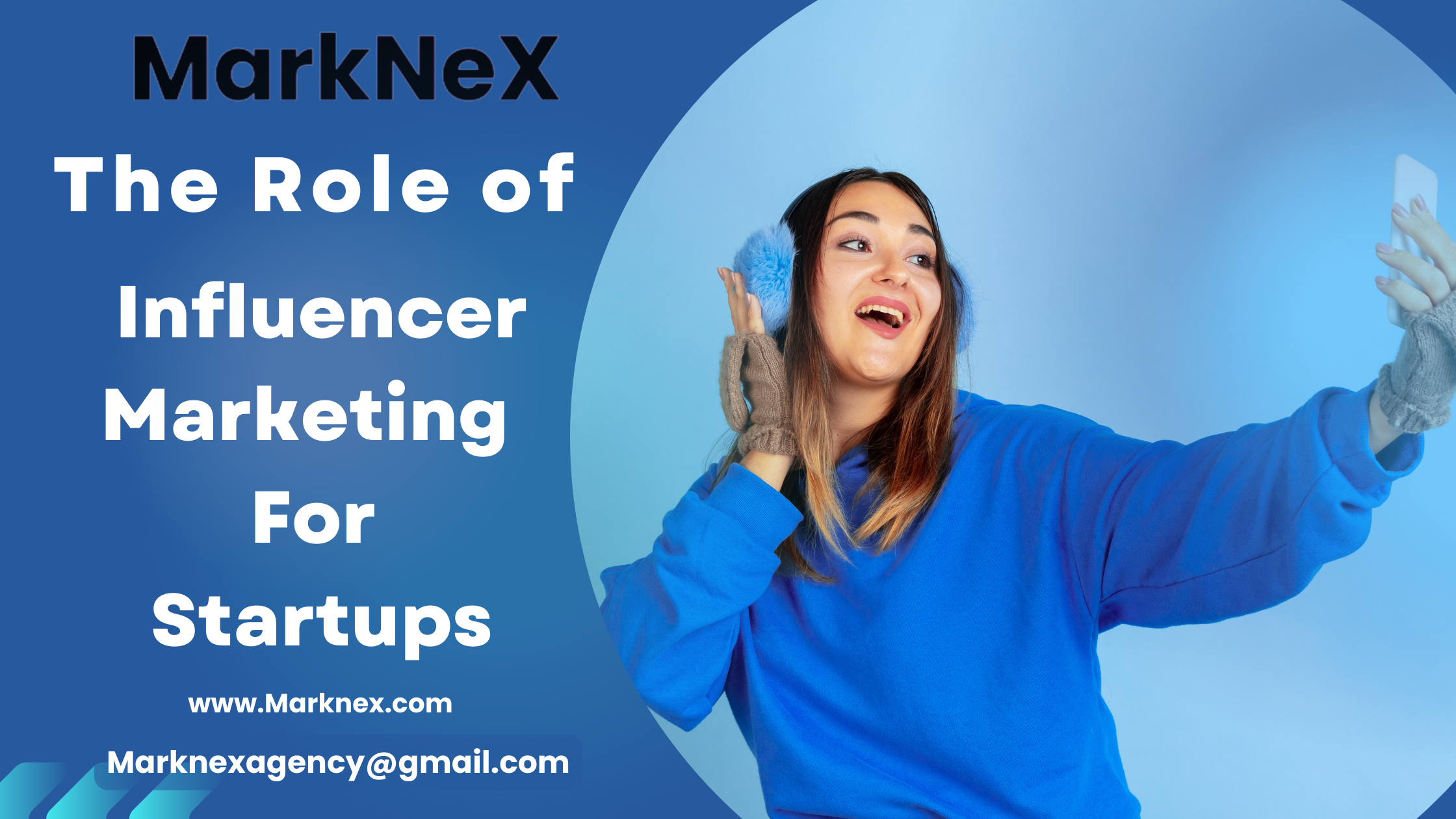In this digital world, content marketing has emerged as a dominant force in the world of marketing. Unlike traditional marketing, which often bombards consumers with promotional messages, content marketing adopts a more subtle approach by delivering valuable and relevant content to the target audience. Explore how content marketing is changing the game in our in-depth analysis. Learn about the latest trends and strategies shaping the future of content marketing.
The Evolution of Content Marketing
Traditional Marketing vs. Content Marketing
Traditional marketing relies heavily on interruptive advertising methods such as TV commercials, billboards, and direct mail. While these tactics can generate some level of brand awareness, they often fail to establish a genuine connection with the audience. On the other hand, content marketing focuses on creating content that addresses the audience’s needs, interests, and pain points. This approach fosters a sense of trust and credibility, making customers more receptive to the brand’s message.
The Rise of Digital Content
With the advent of the internet and digital media, content marketing has taken on new dimensions. Brands now have the ability to reach a global audience through various online platforms and channels. Blogs, social media, podcasts, and videos have become powerful tools for disseminating valuable content and engaging with potential customers.
The Power of Storytelling in Content Marketing
Engaging and Connecting with the Audience
Humans are hardwired to respond to stories. Content marketing leverages the power of storytelling to create a compelling narrative around a brand or product. By crafting stories that resonate with the audience, marketers can forge an emotional connection, leading to increased brand loyalty and advocacy.
Branding and Emotional Appeal
Storytelling also plays a vital role in shaping a brand’s image. Through authentic and relatable stories, brands can humanize themselves and showcase their values, mission, and personality. This emotional appeal not only sets them apart from competitors but also helps in building a loyal customer base.
The Role of SEO in Modern Content Marketing

Keywords and Search Intent:
In the vast digital landscape, search engines play a critical role as gatekeepers that connect users to the information they seek. When users type a query into a search engine, they are essentially expressing their search intent – the specific information they are looking for. Keywords are the words or phrases users enter during their search, and they form the foundation of content marketing and search engine optimization (SEO) strategies.
To ensure that a brand’s content is discoverable by its target audience, marketers conduct thorough keyword research. This involves identifying the relevant keywords and phrases that align with the audience’s search intent and are commonly used in search queries related to the brand’s products, services, or industry.
Understanding search intent is equally crucial. It involves grasping the underlying motivation behind a user’s search. For example, a user searching for “best smartphones” likely has the intent to find product recommendations, while someone searching for “how to fix a broken smartphone screen” intends to find a solution to a problem. By integrating the right keywords into their content and aligning with search intent, marketers increase the likelihood that their content will appear prominently in search engine results pages (SERPs). This, in turn, drives organic traffic to their websites and enhances their online visibility and reach.
On-Page Optimization:

On-page optimization is a set of SEO techniques focused on optimizing the elements present on a web page itself. The objective is to provide search engines with clear signals about the content’s context, relevance, and quality, leading to higher rankings in SERPs.
Key on-page elements that are optimized include:
- Titles: Crafting descriptive and keyword-rich titles that accurately represent the content of the page.
- Headings: Structuring content with H1, H2, H3, and other heading tags to create a logical hierarchy and improve readability.
- Meta Descriptions: Writing concise and compelling meta descriptions that summarize the page’s content and encourage users to click through to the website.
- Image Alt Tags: Adding descriptive alt text to images to make them accessible to visually impaired users and provide additional context for search engines.
- URL Structure: Creating user-friendly URLs that include relevant keywords and reflect the page’s content.
Optimizing these elements helps search engines understand what the page is about, improving its chances of ranking higher in search results for relevant queries. Additionally, well-optimized on-page elements contribute to a positive user experience, leading to higher engagement and potential conversions.
Link Building and Off-Page SEO:
While on-page optimization focuses on elements within a web page, off-page SEO revolves around strategies implemented outside the website. Link building is a crucial aspect of off-page SEO and involves acquiring backlinks from external websites to the brand’s content. Backlinks are essentially hyperlinks on other websites that direct users to the brand’s content. When reputable and authoritative websites link to a brand’s content, search engines interpret it as a vote of confidence in the content’s value and credibility. Consequently, the brand’s website gains authority and trust in the eyes of search engines, leading to higher rankings in SERPs.
However, it’s essential to pursue high-quality backlinks from relevant and reputable sources. Low-quality or spammy backlinks can have a negative impact on a website’s ranking and reputation. Overall, link building and off-page SEO efforts contribute to a brand’s online authority, credibility, and visibility. A well-executed off-page SEO strategy complements on-page optimization, strengthening a website’s overall SEO performance and driving organic traffic to the site.
The Shift Towards User-Generated Content
Building Trust and Authenticity
User-generated content (UGC) has gained popularity as it fosters authenticity. Customers trust the opinions and experiences of their peers more than branded content. By encouraging UGC, brands can tap into the power of social proof, building trust and credibility among their audience.
Leveraging User-Generated Content for Marketing
Brands can utilize UGC in their marketing efforts by featuring customer reviews, testimonials, and social media posts. Such content not only engages the audience but also serves as a cost-effective marketing tool.
Content Personalization and AI
Tailoring Content to Individual Users
Personalization has become a crucial aspect of content marketing. AI-powered algorithms analyze user behavior and preferences to deliver personalized content recommendations. By catering to individual interests, brands can enhance user experience and drive higher engagement.
Automation and Efficiency
AI has revolutionized content creation and distribution. Automated content creation tools can generate articles, product descriptions, and social media posts, saving time and resources while maintaining quality.
The Impact of Video Content
Visual Storytelling and Engagement
Video content has become a dominant form of content marketing due to its high engagement potential. Videos enable brands to tell compelling stories, demonstrate product features, and connect with the audience on an emotional level.
The Growth of Video Platforms
The rise of video platforms like YouTube and TikTok has provided brands with new avenues to reach a vast audience. Brands are leveraging these platforms to engage with users through entertaining and informative video content.
Mobile-First Content Strategy
Mobile Users and Accessibility
The majority of internet users access content through mobile devices. Therefore, content marketers must adopt a mobile-first approach to ensure that their content is accessible and optimized for a seamless mobile experience.
Optimizing for Mobile Devices
Mobile optimization involves creating responsive designs, fast-loading pages, and thumb-friendly navigation. This enhances user experience and reduces bounce rates, positively impacting SEO.
Influencer Marketing in Content Strategy
Influencer Reach and Engagement
Influencer marketing has become a key aspect of content strategy. Influencers have a dedicated following, and partnering with them allows brands to reach new audiences and create authentic content.
Identifying the Right Influencers
It is crucial to identify influencers whose values align with the brand’s and whose audience matches the target demographic. This ensures that the content resonates with the right audience.
Interactive and Immersive Content
Gamification and Interactive Elements
Gamified content and interactive elements, such as quizzes and polls, enhance user engagement. By making content interactive and enjoyable, brands can keep their audience hooked.
Virtual and Augmented Reality Experiences
Virtual and augmented reality are emerging as powerful tools in content marketing. Brands are using these technologies to provide immersive experiences that allow consumers to interact with products virtually.
Content Metrics and Analytics
Measuring Content Performance
Data-driven insights are crucial for optimizing content marketing efforts. Metrics like website traffic, click-through rates, and conversion rates provide valuable feedback on content performance.
Data-Driven Content Strategy
Analyzing data helps marketers refine their content strategy, identify successful tactics, and make data-backed decisions for future campaigns.
Challenges and Opportunities in Modern Content Marketing
Content Overload and Attention Span
In today’s digital age, the internet is flooded with an overwhelming amount of content. Whether it’s blog posts, articles, videos, social media updates, or advertisements, users are bombarded with information at every turn. This phenomenon is known as content overload. The sheer volume of content available online makes it difficult for brands to cut through the noise and capture the attention of their target audience.
As a result of content overload, users’ attention spans have significantly shortened. With so much content vying for their attention, users have become more selective about what they engage with. Brands now face the challenge of creating content that not only grabs the audience’s attention but also sustains it long enough to deliver the intended message. To combat content overload and maintain audience engagement, brands must focus on creating high-quality, valuable, and relevant content. Content that is informative, entertaining, or emotionally resonant is more likely to capture the audience’s interest and keep them hooked.
In addition, adopting a personalized approach to content marketing can be beneficial. By understanding their target audience’s preferences, interests, and pain points, brands can tailor their content to meet specific needs, increasing the chances of user engagement.
Niche Targeting and Audience Segmentation
One of the strengths of content marketing lies in its ability to precisely target and segment audiences. Rather than employing a one-size-fits-all approach, brands can tailor their content to resonate with specific niche audiences and demographics.
Audience segmentation involves dividing a brand’s target audience into distinct groups based on shared characteristics such as age, gender, location, interests, behaviors, and preferences. This segmentation allows brands to create content that speaks directly to the needs and interests of each segment, maximizing the relevance and impact of their marketing efforts.
By catering to niche audiences, brands can position themselves as experts in their respective fields and build stronger connections with their customers. Content that addresses the unique concerns and aspirations of a particular segment is more likely to resonate with them, leading to higher engagement and brand loyalty.
Moreover, niche targeting enables brands to differentiate themselves from competitors and establish a stronger brand identity. Instead of trying to appeal to a broad, general audience, brands can focus on cultivating a loyal following within their niche, ultimately driving more meaningful interactions and conversions.
In conclusion, content overload and shrinking attention spans present challenges for brands seeking to engage their target audience. By crafting high-quality and relevant content, brands can cut through the clutter and capture user attention. Additionally, niche targeting and audience segmentation enable brands to connect more deeply with specific audiences, fostering stronger relationships and brand loyalty.
Conclusion
Content marketing is transforming the way businesses connect with their audience. Through storytelling, personalization, and interactive elements, brands can engage customers on a deeper level. By leveraging SEO strategies and user-generated content, businesses can enhance their online visibility and credibility. The evolution of content marketing presents both challenges and opportunities, and staying ahead in this game requires continuous adaptation and innovation.
FAQs:
Q1. What is content marketing?
Content marketing is a marketing strategy that involves creating and distributing valuable, relevant, and engaging content to attract and retain a target audience.
Q2. How does content marketing differ from traditional marketing?
Traditional marketing focuses on interruptive advertising, while content marketing delivers valuable content to the audience, fostering a connection and trust.
Q3. Why is storytelling essential in content marketing?
Storytelling creates emotional connections with the audience, humanizes brands, and helps in building brand loyalty.
Q4. How does SEO impact content marketing?
SEO ensures that content is discoverable by the target audience through search engines, increasing visibility and organic traffic.
Q5. What role does user-generated content play in content marketing?
User-generated content adds authenticity and trust to a brand’s marketing efforts by showcasing real customer experiences and opinions.






